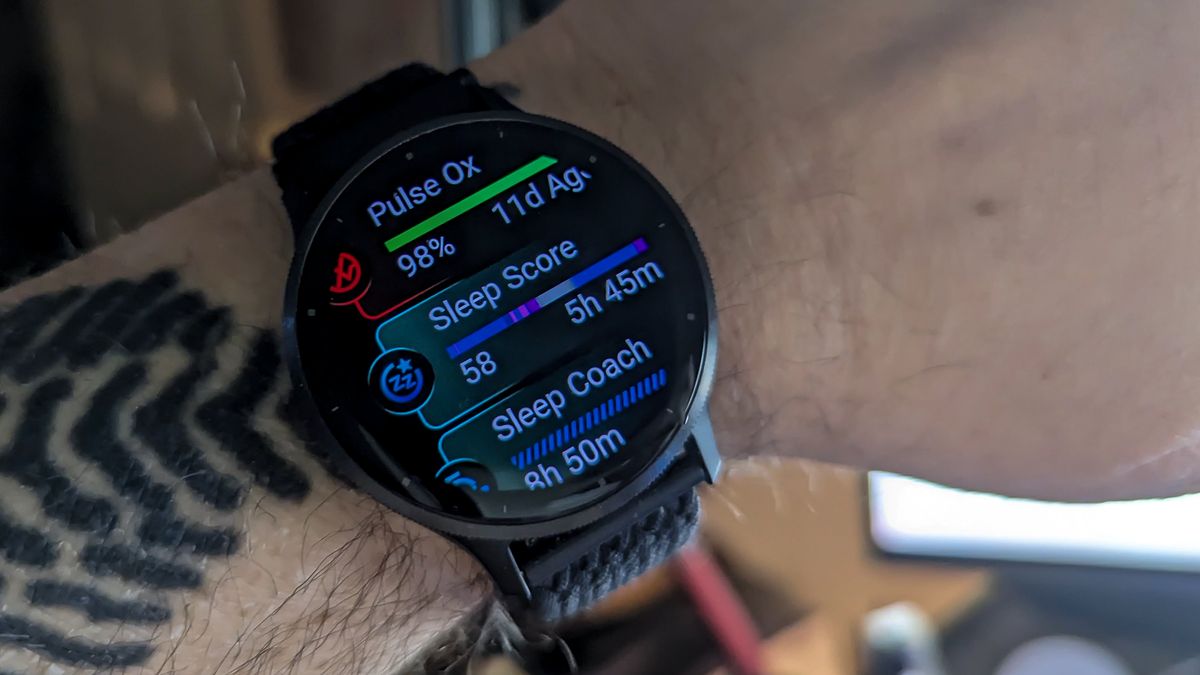World
World’s Last Real ‘Ocean Liner:’ What To Expect On A Transatlantic Cruise

Queen Mary 2 sails away from New York on a transoceanic crossing.
All sea days? Weak Wi-Fi? Nothing to do? These are all common misconceptions of what it’s like to take a transoceanic cruise, says Jason Leppert, cruise editor for TravelAge West and the producer of the Popular Cruising YouTube channel. But, according to Leppert and many other cruise experts, these concerns are unfounded. In fact, today’s modern cruise ships are so entertaining some people like to stay on board, even when they dock in various ports.
Crossing the ocean by ship was once the only way to travel between continents. With the advent of jet travel, it became faster and easier to get around the world by air. But, there are many people that still find allure and nostalgia in a transoceanic cruise. Most cruise lines offer these, but they are typically for their own logistical needs when repositioning a ship between regions. For example, cruise lines often put big ships in the Caribbean during the winter season and in the Mediterranean for the summer.
Sydney, Australia – March 12, 2015: Ferries pass the Queen Mary 2 cruise liner, docked at the … [+]
When these ships cross oceans to change destinations, they continue to operate their full roster of amenities from theatrical revue shows and water parks to specialty restaurants and even occasional port calls at various islands along the way.
Cunard Cruise Line, however, fills a niche offering back-to-back transoceanic cruises many months of the year. Its Queen Mary 2 is the last “ocean liner” in service, a ship that was purpose-built for long crossings, and is the only ocean liner that makes regular passages back and forth across the Atlantic. Cunard has an almost two-century maritime history and specializes in maintaining that nostalgia on each trip.
Retired ocean liner RMS Queen Mary permanently moored and serving as a tourist attraction in Long … [+]
And one important point: these trips are referred to as “crossings,” not cruises.
Most cruise lines often discount their repositioning cruises across the oceans since they have fewer ports of call, but Cunard specializes in these trips. Leppert says Cunard offers more seasonal transoceanic crossings than any other cruise line and guests cherish the experience, despite there not being any stops along the way. Travelers may often wonder what to expect on these sailings. Here are a few of the most common questions they ask.
What are the passengers like?
Passengers travel via ocean liner for a variety of reasons for self-reflection, fear of flying or … [+]
Transoceanic crossings are an iconic trip that frequent cruisers want to tick off their bucket list. It is common to find well-traveled, older passengers that have been on most other cruises, but simply want to cross the ocean. Others travel for specific reasons that airline flights cannot accommodate. This includes passengers traveling with pets, people who are afraid of flying, passengers of size that prefer not to squeeze into an economy seat (a transoceanic cruise can be cheaper than business class) and nautical fans.
Solo travelers are quite common on cruises with people looking to work remotely, meet other passengers or simply take a break from daily life at home. Others are making roundtrip journeys going from New York to Southampton and back just for the experience. Transoceanic crossings have many repeat cruisers, and Cunard has one of the largest number given its history and the only line to preserve that experience today.
Mother and kids standing in Piazza del Duomo and admiring the facade of the famous Siena Cathedral.
Some families even find value in cruising to Europe rather than buying multiple airline tickets because the journey becomes part of the vacation. Multi-generational trips with grandparents traveling with their children and grandchildren is another important sector for transoceanic crossings. Many of them have been sailing since they were young, says Jackie Chase, Cunard’s director of public relations, and that the grandparents enjoy sharing the experience with the next generation.
The kennels aboard Cunard crossings sell out almost immediately.
Queen Mary 2 has a dedicated area for pets with 24 kennels that sell out quickly far in advance, according to Cunard. Pets cannot stay in the cabin with their owners, but people can visit their pets and walk them on a deck reserved for animals. On the last day of a crossing, pet owners bring their four-legged friends (usually dogs and cats although Cunard has provisions to carry ferrets, which it says has only happened once) on a special parade on the main deck much to the delight of other passengers. Traveling with pets is big business and more comfortable for animals than being put in the cargo hold of an airplane.
Pets have their own area where guests can walk them during the sailing.
Another major reason people like crossing by sea is that it minimizes jet lag. Eastbound crossings from New York to England typically move the clock ahead one hour each day at Noon. On Westbound crossings, the clock is moved back one hour each day at 2am. According to Cunard, the reason for changing at night on the journey to New York is that it provides an extra hour of sleep for everyone.
It is common for people to take a cruise in one direction and then fly back or even take a cruise in both directions to minimize jet lag.
Onboard and educational entertainment
The Planetarium aboard Cunard Queen Mary 2
If you think crossing the ocean by sea will be boring, that’s not the case. Unlike other cruises where the ports are the primary attraction, a transoceanic crossing is about relaxation, entertainment and even education. Cunard has daily talks about everything from true crime and astronomy to history and art.
It also hosts themed cruises that attract people interested in particular topics like gastronomy, wine and art. A partnership with two Michelin-starred chef Michel Roux showcased his iconic tasting menus drawing foodies on particular sailings.
Guests can watch rehearsals and performances of the English National Ballet aboard a specialty … [+]
Once a year, it partners with The Greatest Generation to bring veterans aboard to lead talks and co-mingle with travelers. These are timed with the anniversary of the D-Day attacks and bring veterans, their families and history buffs to France.
A full-service spa and beauty salon provide pampering, and an impressive library with a large collection of books is a popular spot. During the evening hours, live music, theater shows, comedians and other performances draw people into the large theater. Cunard has partnered with big names like The Juilliard School and the Royal Astronomical Society to provide entertainment and lectures aboard its ships. It has also featured West End performances, including most recently “Pride and Prejudice* (*sort of),” based on the novel by Jane Austen and “The Best Exotic Marigold Hotel.”
Trivia, dance classes, board games, activities like archery and pickleball, workout sessions and swimming pools fill the day with gala dinners an evening favorite.
Dress codes evolving
Business casual attire is the norm most evenings.
Aboard Cunard, dressing for dinner is a tradition with tuxedos and ball gowns the norm many nights (although not required). “More and more passengers prefer casual over formal,” says Leppert. “But, for those who still enjoy dressing up, Cunard definitely has the market cornered as the only brand still dedicated to a traditional dress code.”
“It’s the romance of it all for me,” adds Leppert. “The history of traveling the same route as so many immigrants and ancestors past is really something special, particularly doing so in such class and style.”
People on ship in formal attire
Dressing for dinner and for sailing in general is a highlight aboard Cunard. Even the staff wear impressively formal uniforms. For Queen Anne 2, Savile Row master tailor Kathryn Sargent designed outfits for the crew (from wait staff to the captain).
What is it like onboard?
The main dining room aboard Cunard Queen Mary 2.
While Queen Mary 2 is designed like a vintage ocean liner with Art Deco accents, its interiors blend modern touches to appeal to a new generation of travelers. The ship makes the seven-day crossing about 50 times a year.
Aboard Queen Mary 2, the most premium cabins are dubbed Princess Grill and Queens Grill cabins. The names date back to HAPAG liner Deutschland, which operated a more upscale dining room specializing in grilled meats and charged an extra fee for dining there. Cunard soon added its own grill rooms, and later named a subset of state rooms and suites with the grill name and offering their own private dining rooms and ensuite perks.
Queen Mary 2 has a variety of dining options, including special restaurants for certain cabin … [+]
Cunard’s new SpaceX Starlink satellite-based Wi-Fi system is a vast improvement over what many other cruise lines offer. It is not free, but it offers robust speed that puts it on par with what travelers experience on land and is available across the fleet.
The recent launch of Queen Anne, Cunard’s newest ship, carries many of the same regal design features inside, but is not an ocean liner and will not make the same number of crossings as Queen Mary 2. It is the fourth ship in the current fleet, but is actually the 249th ship to bear the Cunard name. Queen Anne will make more traditional cruise sailings with daily ports of call in different regions from Alaska to the Mediterranean.
Not much to see, but a lot to do
Liverpool, Merseyside, United Kingdom – June 3 2024: Liverpool celebrations at Pier Head as Cunard … [+]
Not much, and that’s the beauty of it. Travelers like the seclusion and disconnect from the modern world. A highlight for many is the daily briefings from the captain about notable features of the route like seamounts and even a mention of the Titanic wreckage. Cunard’s Carpathia was the ship that rescued passengers from Titanic, which belonged to its biggest marine competitor White Star Line.
In the North Atlantic, there is not much marine traffic with only the occasional cargo ship. Most cruise ships prefer to take the southerly route for a crossing because of rough seas although Queen Mary 2 is built for the North Atlantic, which means passengers do not feel much of it.
Other cruise lines add a few ports to their crossings typically stopping in the Canary Islands, the Azores Islands or Bermuda. Since these cruises only take place twice a year when the ship repositions, they are usually more affordable since they have fewer ports. Cunard’s transoceanic sailings, however, sell out quickly because they appeal to a well-traveled audience that is aboard for the ship itself and the glamor of a yesteryear experience.
Will there ever be another ocean liner built?
Cunard cruise liner Queen Mary 2 is pictured docked in Brooklyn, New York. The liner is the … [+]
The architecture and design of an ocean liner is different than a traditional cruise ship. The cost of an ocean liner is not necessarily efficient for a cruise line. They tend to be smaller and built for speed and maritime efficiency whereas cruise ships are built for size and often to maximize capacity. Since design trumps maximizing profits for an ocean liner, many experts believe that another one may not be built any time soon.
“The Queen Mary 2 definitely has many more years left in her, but I’m not certain if we will ever see a ship built like her, as a true ocean liner with a proper draft, ever again,” adds Leppert. “I would love to see a Queen Mary 3, but I don’t know if one would be profitable enough in a decade or so.”
What is the future for transoceanic crossings?
A rendering of the pool area on Cunard’s new Queen Anne ship
“There is a strong emphasis on North America in the coming years,” says Chase. “Starting in 2025, Queen Elizabeth will base itself in Seattle for her Alaska summer season, and will then transition to home port in Miami for her winter, Caribbean season. This is an addition to Queen Mary 2 being in NYC between April and December each year with her Transatlantic Crossing itineraries.”
Moving ships between different regions of the world for seasonal sailings is standard practice, but only Cunard makes it a hallmark of the brand. Its transoceanic crossings have become a bucket-list trip for many travelers.
Guests play shuffleboard on the ship’s deck.
Cunard also offers transoceanic crossings from New York that continue to Le Havre, France and Hamburg, Germany. The cruise line has its own loyalty program, which rewards guests in extra amenities each sailing based on the number of cruises they take. There are no complimentary voyages, however.
This segment of the industry is not a growing one, says Leppert. “But, there are still plenty of people who prefer this form of travel over air, provided you have the week it takes to cross in either direction. I think the future remains with Cunard for now.”







